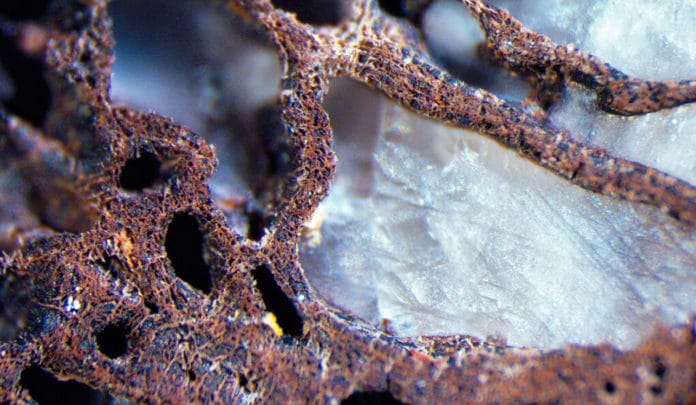Birds and mammals independently evolved the highest metabolic rates among living animals. Their metabolism generates heat that enables active thermoregulation, shaping the ecological niches they can occupy and their adaptability to environmental change. However, no proxy allows the direct reconstruction of metabolic rates from fossils.
A new study by Yale University scientists shed light on dinosaur metabolism by identifying molecular markers for metabolic stress found in skeletal material. They found that the earliest dinosaurs and pterosaurs had exceptionally high metabolic rates and were warm-blooded animals.
Lead author Jasmina Wiemann, a former Yale paleontologist who is now at CalTech, said, “While modern ecologists tend to emphasize the importance of metabolic rate to ensure that animals survive environmental perturbations, we showed that metabolism is not the reason why birds were the only group of dinosaurs to survive the mass extinction event at the end of the Cretaceous period. Many dinosaurs with metabolisms as efficient as those in modern birds went extinct.”
As mentioned above, scientists identified molecular markers for metabolic stress found in skeletal material in modern animals and long-extinct species. The biomarkers offer direct insights into the metabolism of ancient animals.
Senior author Derek Briggs said, “The interactions of animals and the role they play in an ecological community is reflected in their metabolic rate. The metabolic rate reflects how much oxygen an animal breathes relatively to its body mass. As a by-product of oxygen respiration, excess heat is released — which determines whether an animal is warm-blooded and can maintain a constant body temperature or cold-blooded and depends on the outside temperature of their environment for survival.”
“In recent years, new research on dinosaurs has transformed their image, shifting the focus from slow, reptilian giants to agile predators, but dinosaurs’ true metabolic and thermoregulatory capacities are debated.”
Scientists analyzed more than 50 fossil and modern vertebrates from the Yale Peabody Museum of Natural History collections. They then used laser microspectroscopy techniques such as Raman and Fourier-transform infrared spectroscopy to capture biomarkers in modern and fossil bones responding to laser light.
Scientists showed that many early dinosaurs had a metabolic rate comparable to modern birds.
Briggs said, “Dinosaurs included remarkably swift and agile animals with energy levels like those of modern warm-blooded animals and, notably, evolved the exceptional metabolism of modern birds long before active flight.”
Over time, the metabolic rates were found to drop in all significant groups of ornithischian dinosaurs, including Stegosaurus and Triceratops.
Wiemann said, “Such low metabolic rates imply that these dinosaurs depended on behavioral thermoregulation, such as sun basking and seasonal migration into warmer climates. It seems that warm-bloodedness evolved multiple times independently, in mammals, in marine reptiles such as the plesiosaur, and in ornithodirans, the group that includes dinosaurs and pterosaurs.”
Wiemann said she and her colleagues are hopeful their new, biomolecular approach to analyzing fossils will aid paleontologists and zoologists alike.
“Our goal is to provide a complete picture of how animal physiology responded to past environmental and ecological change and contribute to the lessons of the past that will guide future strategies for biodiversity conservation in times of global climate change.”
Journal Reference:
- Wiemann, J., Menéndez, I., Crawford, J.M., et al. Fossil biomolecules reveal an avian metabolism in the ancestral dinosaur. Nature (2022). DOI: 10.1038/s41586-022-04770-6
